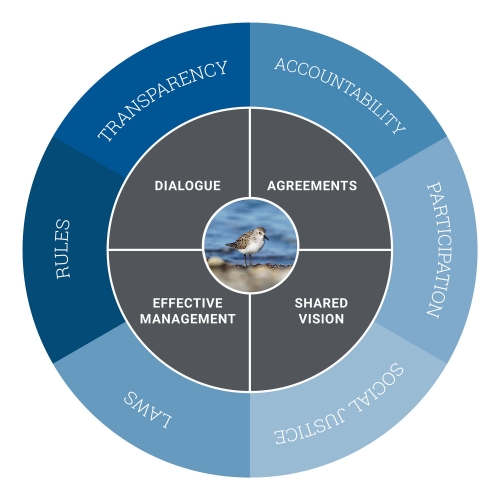Good Governance
Good Governance plays a key role in the successful conservation of shorebirds and their habitats.
Many WHSRN sites involve multiple stakeholders. Each have a role in managing the area, but all too often these stakeholders may view management for shorebirds differently.
Good governance can provide a structured and collaborative process for creating guidelines for decision-making, including who has access to information and who participates in decision-making. By creating agreements through consensus, norms and rules are established for decision-making, management actions, and effective conservation.
With Good Governance, Site Partners Can:
- Form multi-stakeholder management committees
- Create management plans developed through participatory processes
- Create local authority by-laws that regulate the use of an area
- Develop proposals for official protected area status
- Develop projects that integrate site conservation efforts with local development
How Does Good Governance Work?

A good governance process can help determine the relationships between these key stakeholders and how each is held accountable.
Potential Participants Might Include:
- Municipalities
- Government ministries
- Communities and local leaders
- Non-governmental organizations (NGOs)
- Businesses
- Private landowners
- Administrators and managers of protected areas
- Universities and research centers
Site Support
The WHSRN Executive Office can provide strategic guidance to improve governance conditions at your site. Through on-site workshops and continued mentoring, you and your partners can build and strengthen your site’s capacity for good governance.
For more information or to request a Good Governance workshop at your site, contact Diego.
All photos: Diego Luna Quevedo.




